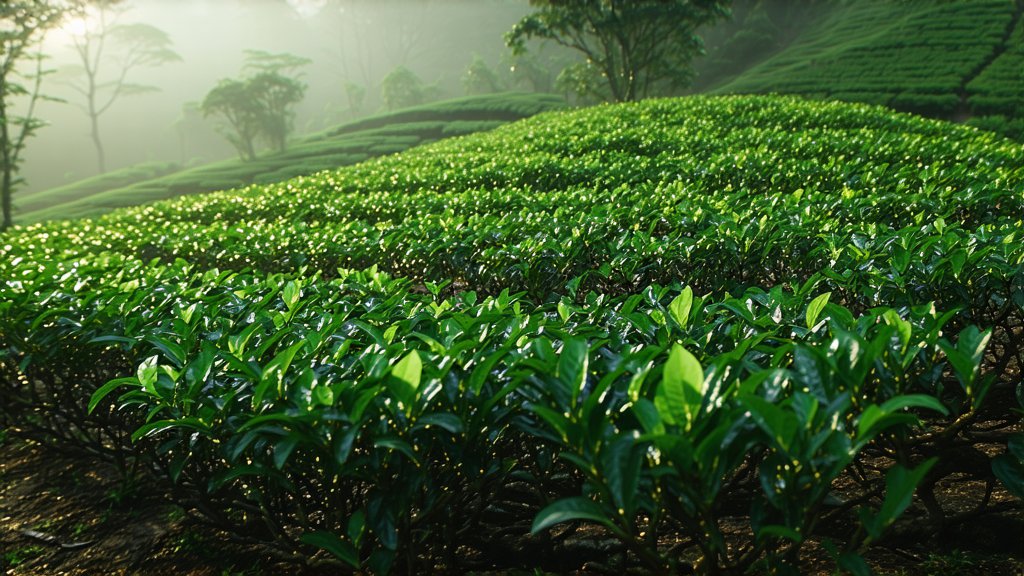
In the vast and diverse landscape of Chinese tea culture, few varieties capture the essence and history of tea as profoundly as Keemun black tea. Originating from the picturesque Qimen County in Anhui Province, this exquisite tea has earned a prestigious reputation both domestically and internationally for its unique flavor profile, rich history, and meticulous production process. This article delves into the fascinating world of Keemun black tea, shedding light on its historical roots, varieties, intricate manufacturing techniques, and the art of its appreciation.
Historical Background
Keemun black tea, also known as Qimen black tea, traces its origins back to the Tang Dynasty (618-907 AD), making it one of the oldest tea-producing regions in China. However, it was during the Qing Dynasty (1644-1912) that Keemun tea gained prominence, particularly after the Taiping Rebellion when many skilled tea artisans fled to Qimen County, seeking refuge and bringing with them their expertise in tea production. This influx of talent significantly contributed to the refinement and elevation of Keemun tea's quality and reputation.
Varieties of Keemun Black Tea
Keemun black tea encompasses several distinct categories, each with its own unique characteristics:
-
Keemun Mao Feng: Often considered the pinnacle of Keemun teas, Mao Feng is made from the finest young leaves and buds, resulting in a delicate yet complex flavor profile with hints of orchid and fruity undertones.
-
Keemun Hao Ya (Grade A): Slightly more robust than Mao Feng but still maintaining a high level of sophistication, Hao Ya features a fuller body and a harmonious blend of sweetness and astringency.
-
Keemun Hao Ya A (Grade B): With a more pronounced maltiness and earthy notes, Grade B offers a hearty option for those who prefer a stronger cup without compromising on quality.
-
Keemun Congou: Traditionally used for blending purposes, Congou presents a more economical choice while still delivering the distinctive Keemun character, often described as smoky and slightly spicy.
The Art of Keemun Tea Production
The craftsmanship behind Keemun black tea is a testament to centuries of tradition and expertise. The process begins with careful hand-picking, selecting only the top one or two leaves and the bud, which ensures the highest quality and most tender parts of the plant are used.
Following harvesting, the leaves undergo a series of meticulous steps:
-
Withering: Freshly picked leaves are spread out thinly to allow moisture loss, softening the leaves and preparing them for rolling.
-
Rolling: Leaves are rolled either by hand or machine to release juices and initiate oxidation. The rolling process also shapes the leaves, contributing to the final appearance of the dried tea.
-
Oxidation: Unlike green teas, which are quickly heated to stop enzymatic activity, Keemun black tea leaves are allowed to oxidize fully, turning a deep copper color and developing its characteristic flavors. This step can last several hours and is carefully monitored to achieve the desired level of complexity.
-
Firing: Finally, the oxidized leaves are dried over charcoal or wood fires, imparting a subtle smokiness that enhances the tea's aroma and depth. This traditional firing method is crucial for authentic Keemun tea.
Appreciating Keemun Black Tea
To truly appreciate Keemun black tea, one must engage in the ritual of Gongfu Cha, a Chinese tea ceremony emphasizing precision, mindfulness, and respect for the tea. Here’s a guide to savoring every sip:
-
Preparation: Use freshly drawn, cooled water to avoid chlorine taste and ensure optimal brewing temperatures (around 90-95°C or 195-205°F).
-
Warming the Teapot and Cups: Rinse the teapot and cups with hot water to preheat them and enhance the tea's aroma.
-
Measuring Tea Leaves: For a 150ml gaiwan (a traditional Chinese teapot with a lid), use approximately 3-5 grams of loose leaf tea.
-
Steeping: Add hot water to the tea leaves, allowing them to infuse for about 30 seconds for the first infusion. Subsequent steepings can be gradually increased in time, typically by 10-15 seconds per brew.
-
Pouring and Tasting: Pour the brewed tea evenly into small cups, ensuring each guest receives an equal share. Observe the liquor's color, inhale its aroma deeply, then take small sips to fully experience the tea's complexity and nuances.
-
Multiple Infusions: Keemun black tea is resilient and can be steeped multiple times, each infusion revealing different layers of flavor from floral and fruity notes to deeper, more earthy tones.
Conclusion
Keemun black tea stands as a shining example of China's rich tea heritage, embodying centuries of tradition, innovation, and unparalleled craftsmanship. From its humble beginnings in Qimen County to becoming a sought-after delicacy worldwide, Keemun continues to captivate tea enthusiasts with its distinctive flavor, aromatic allure, and depth of character. As we continue to explore and celebrate the diversity of Chinese teas, Keemun remains a timeless treasure, inviting us to slow down, savor, and connect with nature through each meticulously crafted cup.